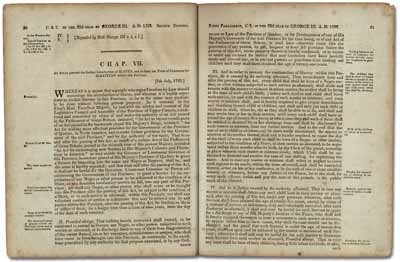Upper Canadian Act of 1793 Against Slavery National Historic Event
Niagara-on-the-Lake, Ontario

Upper Canadian Act of 1793 Against Slavery
(© Expired | Expirés)
Address :
Niagara-on-the-Lake, Ontario
Recognition Statute:
Historic Sites and Monuments Act (R.S.C., 1985, c. H-4)
Designation Date:
1992-11-06
Other Name(s):
-
Upper Canadian Act of 1793 Against Slavery
(Designation Name)
Research Report Number:
1992-043
Importance:
First legislation in the British Empire against slavery
Plaque(s)
Existing plaque: 494 Mississauga Street, Niagara-on-the-Lake, Ontario
Inspired by the abolitionist sentiment emerging in the late 18th century, Lieutenant-Governor J.G. Simcoe made Upper Canada the first British territory to legislate against slavery, which had defined the conditions of life for most people of African ancestry in Canada since the early 17th century. The Act of 1793 did not free a single slave, but prevented their importation and freed the future children of slaves at age twenty-five. Faced with growing opposition in the colonies, slavery declined. The Imperial Act of 1833 finally abolished slavery in the British territories in 1834.